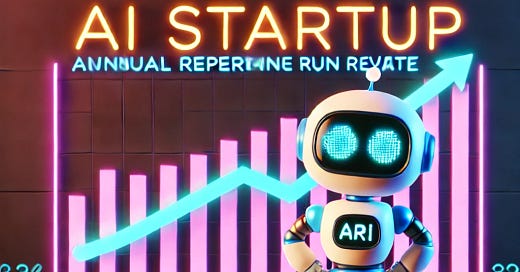We often hear these days about AI startups hitting big revenue milestones. ”$1M ARR in six months!” “$10M ARR in a year!” The numbers sound great. But the real question is: How much of it will stick?
A lot of today’s AI revenue isn’t built to last. What looks like ARR is often Experimental Revenue Run Rate (ERR)—short-term pilots, exploratory budgets, and “let’s try it” deals that don’t convert into long-term commitments (Clouded Judgement).
Talking to friends building AI for manufacturing, I saw the same pattern emerge again and again. The initial traction was strong—companies were eager to test automation, budgets were available, and ARR ramped up quickly. But many of these deals were still in the experimentation phase—running pilots, evaluating multiple vendors, and determining long-term feasibility. What looked like solid ARR often turned out to be temporary, with adoption depending on deep integration, workflow changes, and measurable ROI.
Take Lovable, an AI-powered tool that quickly reached $10M ARR in just two months. The rapid growth signaled strong interest, as companies were eager to explore its potential. But early adoption doesn’t always lead to long-term retention. Some users later shared that they encountered challenges—questions around validation, accuracy, and overall reliability. As with many AI products, the initial excitement of experimentation was high, but long-term adoption often depends on how well the tool integrates into workflows and consistently delivers value (LinkedIn).
A VC recently put it bluntly:
“I see AI startups hitting $400K MRR in four months—and I still pass.”
The numbers look great. But how much of it actually sticks? That’s the part investors are really watching. AI is evolving quickly, switching costs are low, and better models emerge every few months. The real challenge isn’t getting customers—it’s keeping them.
Retention is the New Growth Strategy
Momentum can get you to $10M ARR, but retention is what keeps you there. The best AI startups won’t just scale quickly—they’ll build products that customers can’t imagine working without.
So next time someone shares their ARR, a better question might be: “How much of that will still be there next year?”





